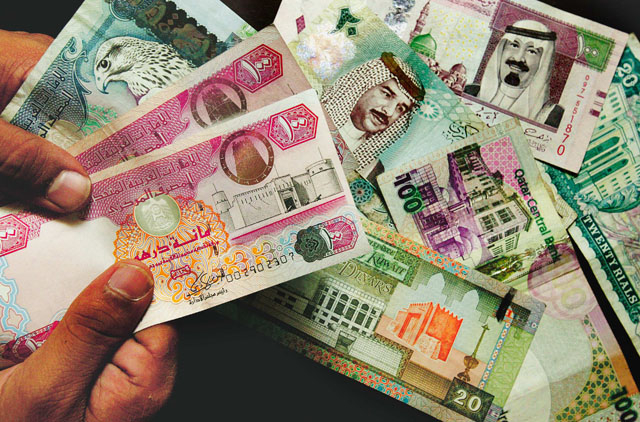Dubai: Gulf oil exporters are continuing to adjust to low oil prices and the overall growth in the GCC region is expected to bottom out in 2017 at 0.5 percent, as the OPEC-led deal reduces oil output, according to the latest Regional Economic Outlook of the International Monetary Fund (IMF).
Oil prices have remained soft, despite the extension of the production cuts led by OPEC, which have dampened oil sector growth and contributed to large fiscal and external deficits.
The IMF expects non-oil growth is expected to recover to about 2.6 per cent in 2017 and 2.4 per cent in 2018 as fiscal consolidation slows. Both oil and non-oil growth for GCC countries have been revised down since the May 2017 Regional Economic Outlook.
“Lower oil prices has made it more urgent for oil exporters to move away from a focus on redistributing oil receipts through public sector spending and energy subsidies. To this end, the region’s oil exporters have outlined ambitious diversification strategies, but medium-term growth prospects remain below historical averages amid ongoing fiscal consolidation,” said Jihad Azour, Director of the IMF’s Middle East and Central Asia Department.
These subdued growth prospects further highlight the need to speed up implementation of structural reforms. Oil exporters should continue pursuing deficit reduction plans to maintain fiscal sustainability and, where relevant, to support exchange rate pegs.
Lower oil prices have contributed to large fiscal deficits across oil Middle East, North Africa Afghanistan and Pakistan (MENAP) oil exporters. Deficits jumped from 1.1 per cent of GDP in 2014 to 10.6 per cent of GDP in 2016, but are expected to ease to 5.2 per cent of GDP this year on the back of a modest recovery in oil prices and significant deficit reduction efforts.
“The progress in fiscal consolidation is uneven across countries. Some countries will need to identify additional fiscal consolidation measures, while protecting social and growth-oriented expenditures. All countries would benefit from further improving their fiscal institutions and frameworks,” said Azour.
Low oil prices are also expected to dampen medium-term growth outlook of GCC countries. GCC non-oil growth is projected to be modest at 3.4 per cent in 2022, about half of the 6.7 per cent of 2000–15. GCC countries with larger buffers, such as Kuwait and the UAE, are adjusting their fiscal positions gradually. This is allowing them to keep non-oil growth broadly steady.
The diplomatic rift between Qatar and it neighbours is expected to have a limited impact on growth in the region at this stage, although a protracted rift could weaken medium-term growth prospects, not only for Qatar but also for other GCC countries.
The region’s growth outlook faces huge downside risks, according to the IMF. Considerable uncertainty surrounds the oil price outlook, but, on balance, risks from oil price volatility appear tilted more to the downside. Downside risks from regional conflicts and geopolitical developments also remain. Other, more global, risks could also affect the region including faster-than-expected normalization of monetary policy in the US, and the pursuit of inward-looking policies by advanced economies.
Range bound oil
Oil prices are trading between $50–$60 a barrel, an increase from last year’s average of $43 a barrel is expected to remain range bound. In May 2017, OPEC and several non-OPEC producers extended their agreement to reduce oil production until the first quarter of 2018. However, despite the extended agreement, the oil price outlook has been revised downward since the May 2017 Regional Economic Outlook.
VAT’s impact on inflation will be muted
The impact of the introduction of value added tax (VAT) in the UAE and Saudi Arabia from January 1, 2018 on annual inflation rates of these countries are expected to be only a fraction of the proposed tax rate of 5 per cent, according to the International Monetary Fund (IMF.
The UAE and Saudi Arabia have confirmed the implementation of VAT starting next year. VAT being a consumption tax, tax burden is expected to reflect on the prices and consumption.
“The impact of VAT on inflation and government revenue will vary depending on the proportion of consumption in the economy and how much of the consumption base is captured by VAT. We expect a portion of VAT to be absorbed by the supply chain,” said said Jihad Azour, Director of the IMF’s Middle East and Central Asia Department
A sudden spike is unlikely because of the price scrutiny that is expected to follow the introduction of VAT; competitive pressures and a potential slump in consumer spending as a result of new taxes.
According to the latest inflation figures from the IMF, consumer price inflation in the UAE eased to 1.8 per cent from 4.1 per cent in 2015, reflecting softer domestic demand and declining rents. Despite the introduction of VAT the IMF projects an annual average inflation of 2.9 per cent in 2018 and 2.5 per cent in 2019.













